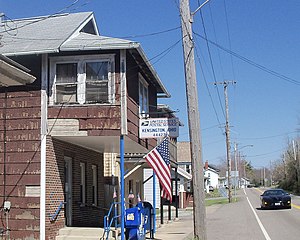sigmafullpac
Zip Code Msa Crosswalk Bible Study
Religion Census is your source for religious data at the county level. It reports the number of congregationsin every U.S. County equivalent for each of 236 faith groups.Check the for county, state, metro, or national totals.Check the for graphic informationabout specific groups.This is an update of the 1952, 1971, 1980, 1990, and 2000 studies originally done by theand the.
Msa Zip Code List
Since 1990, the(ASARB)has sponsored the studies.Each participating religious body supplies the number of churches, full members, adherents, and attendees for eachcounty. See for more information. Our data collectionoffice can assist any group with compiling their data to the county level.The study coincides with the US census. National polls rarely give any religious data below the national level.This study gives a picture of county-level religious affiliation nationwide.

The longevity of the study helps toidentify trends and track religious change.Online reports from the 2010 U.S. Religion Census can be obtained for various geographies free of charge from(ARDA). ARDA alsoarchives the previous datasets and makes them available for download.The book includes data tables, documentation, 32 pages of color maps and charts, and a wall map of religious families by county.It can be ordered at 1-800-877-0700 or.The full-color wall maps are available from.© 2019 Copyright.
This attachment provides the Metropolitan Statistical Area (MSA)/Core-Based Statistical Area (CBSA) coding scheme used for NLSY97 geocode variables.The following tables are available as PDFs:. (please read the important information at the end of this page before using the CBSA list)In rounds 1-7, the NLSY97 use the MSA code scheme from the 1994 County and City Data Book. These codes are slightly different than the standard government-assigned codes provided on the Census Bureau's Web site and in OMB Bulletin 98-06. The first section simply lists the name and code of each MSA for the data from rounds 1-5. For those MSAs that are also part of a Consolidated Metropolitan Statistical Area, the CMSA code is provided.
Users should note that New England Consolidated Metropolitan Area (NECMA) codes, not MSA codes, are used for the New England states. Although NECMA codes are not listed separately in this document, they can be easily identified because they end in '3' rather than '0.' The second part of this attachment lists the code and name of each CMSA for rounds 1-5, followed by an enumeration of each of the Primary Metropolitan Statistical Areas (PMSAs) which comprise the CMSA. Since the MSA codes changed slightly in round 6, the third part of this attachment provides the MSA codes used in rounds 6 and 7.Beginning in round 8, new Census standards were used in the creation of this variable. Rather than MSAs, the Census Bureau now defines Core-Based Statistical Areas (CBSA) statistical geographic entities consisting of the county or counties associated with at least one core (urbanized area or urban cluster) with a population of at least 10,000, plus adjacent counties having a high degree of social and economic integration with the core as measured through commuting ties with the counties containing the core.Metropolitan and micropolitan statistical areas are the two categories of CBSAs. Metropolitan statistical areas have at least one urbanized area of 50,000 or more population, plus adjacent territory that has a high degree of social and economic integration with the core as measured by commuting ties. Micropolitan statistical areas are a new set of statistical areas that have at least one urban cluster of at least 10,000 but less than 50,000 population, plus adjacent territory that has a high degree of social and economic integration with the core as measured by commuting ties.

Zip Code To Cbsa
Metropolitan and micropolitan statistical areas are defined in terms of whole counties or county equivalents, including the six New England states. As of June 6, 2003, there are 362 metropolitan statistical areas and 560 micropolitan statistical areas in the United States.The NLYS97 Rounds 8 and up use CBSA codes updated in January 2006.